Second only to the Little Mermaid in popularity, the Round Tower in Copenhagen is among the city’s most-visited attractions. The Rundetårn (you might see it written as Rundetaarn, too) is located on one of the busiest streets and is considered Copenhagen’s point zero. What makes it even more important is that it’s the oldest functioning Observatory in Europe, dating back to 1642.
Moreover, the Round Tower offers magnificent city views, and its equestrian staircase is a reason by itself a reason to visit it. Unfortunately, the weather wasn’t on my side on my recent trip to Denmark’s capital. No matter what, I stepped into the famous tower and enjoyed its old European architecture and the rooftop views. Therefore, in this article, you will read my impressions and discover 10+1 facts about the Rundetårn paired with my photos.
Let’s begin.
*Some links are affiliate links. It means that if you buy something, I might earn a small commission at no additional cost to you.
10+1 facts about the Round Tower in Copenhagen
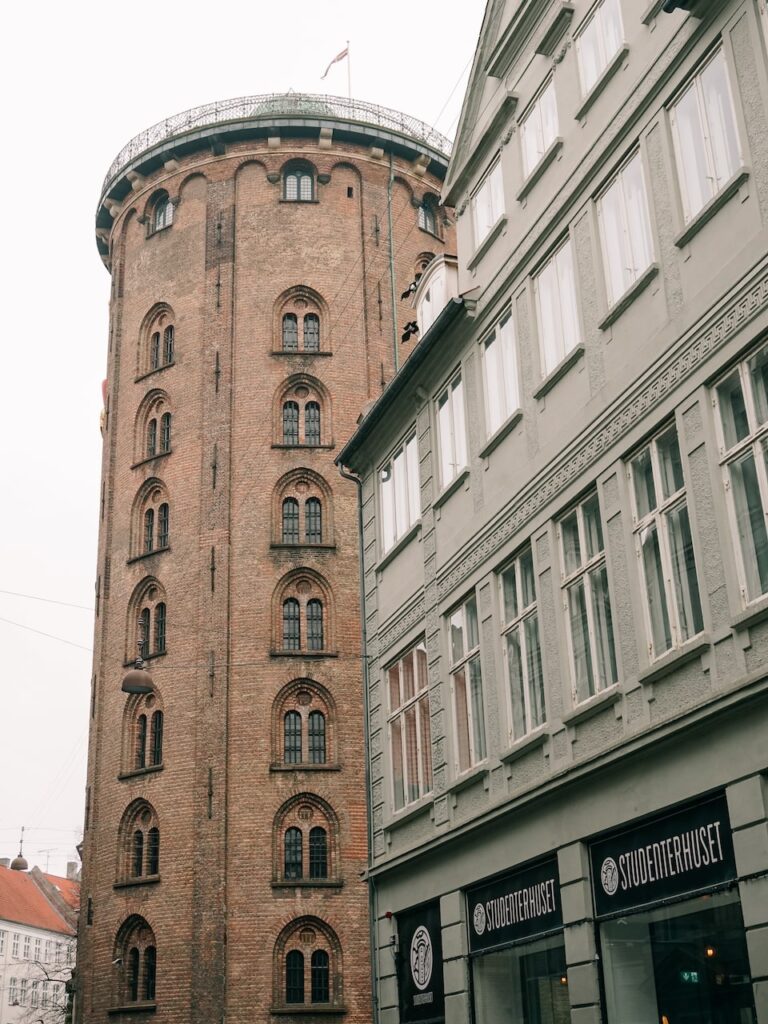
As you will see in the following lines, the Rundetårn has significant historical importance and reflects the spirit of the era in which it was constructed. It’s one of the city’s landmarks, and if you purchase the Copenhagen Welcome Card, you can visit it for free, together with 80+ other attractions.
So, let’s dive into the Round Tower’s history and see what makes it stand out.
The Round Tower was an ambitious project since day one
Constructed under the reign of King Christian IV, the Round Tower encompasses Denmark’s needs and ambitions in the 17th century. The architect who undertook the project was Hans van Steenwinckel the Younger, and construction started in July 1637. The tower took five years to complete, and the idea was to host the so-called Trinitatis complex: the astronomical Observatory at the top, the university library, and the Trinity Church.
You might rightly wonder why an observatory tower was constructed in the city’s heart. Astronomy’s popularity was high in the 16th and 17th centuries, and one of the most famous astronomers was Tycho Brahe from Denmark. Brahe died much earlier, in 1601, before the Round Tower’s construction; however, his legacy lived through the centuries. With European countries colonizing territories overseas, measuring the world became the cornerstone of politics.
The equestrian staircase of the Rundetårn is stunning
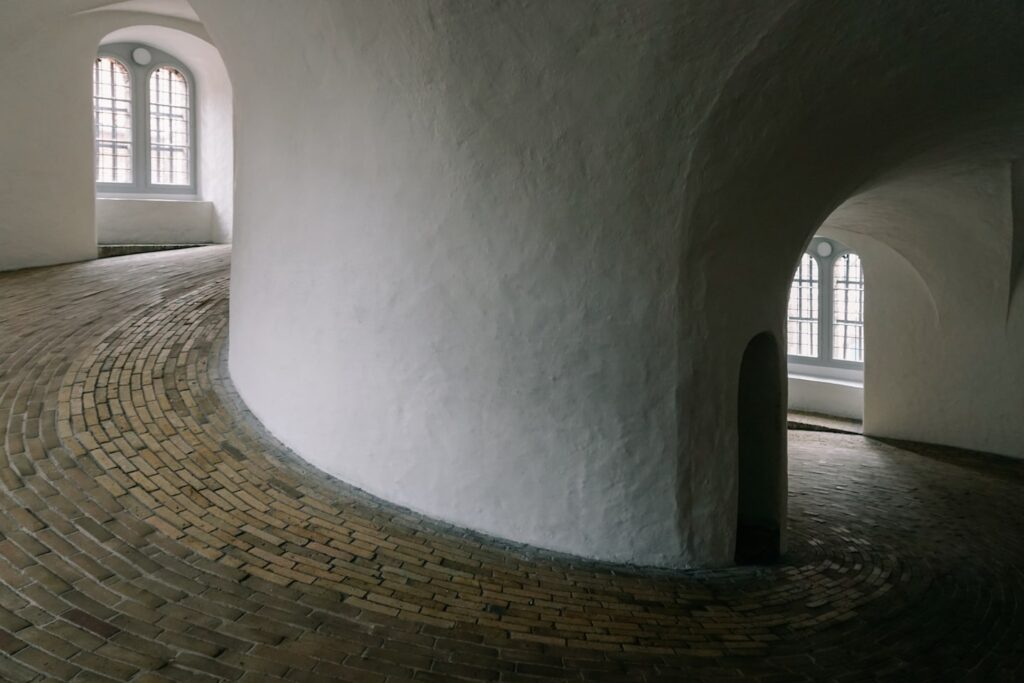
One of the tower’s trademarks is definitely the impressive equestrian staircase. Practically, an equestrian staircase is a spiral ramp that leads to the building’s top without any stairs. It is slightly steep but easy to walk -and definitely easier than climbing numerous flights of stairs.
While an equestrian staircase might look like an extravagant element of architecture, it was actually a necessity that drove this decision. You see, spiral ramps are easy to navigate for horses and mules. As I wrote earlier, apart from the Observatory, the Round Tower also hosted the university library. Carrying loads of books or instruments from or to the tower would be time-consuming. However, loading horses and mules made transportation much easier at this time.
Therefore, instead of having several floors with stairs, the Round Tower in Copenhagen features a single spiral ramp that twists approximately 7 1/2 times around its core. Impressive.
Stones from three different places were used

Already from late 1636, almost a year before the construction’s beginning, the area around the Rundetårn had to be cleared up. The land plot was already busy, and the authorities had to ensure that no old building would have been left on-site.
The colors of the Round Tower were yellow and red, the royal colors of the House of Oldenburgs. The first stones originated from the city’s fortifications, and later on, some of them were brought from Roskilde, an area close to the capital. However, since the local production wasn’t assumed to be top quality, most of the stones were ordered from the Netherlands. Consecutive shiploads arrived at Copenhagen throughout the first half of 1637, and construction began in July.
The Hollow Core marks Denmark’s zero point
The so-called Hollow Core is a cylinder connecting the top and bottom of the tower. Although it’s pretty hard to photograph, it deserves to stand on the glass surface and see something resembling chaos beneath your feet. However, if heights scare you, it’s better to have a look and avoid standing on it, although it’s totally safe. It’s uncertain if the Hollow Core was a telescope or a drainpipe. What we know for sure is that this spot served as a zero point in the attempt to create an accurate map of Denmark.
On a side note, in 1880, a choir boy fell while playing hide-and-seek in the Round Tower. Luckily enough, even though he fell 25 meters down, the boy survived and only had bruises. Such openings no longer exist in the tower, and it’s perfectly safe to visit and enjoy it.
The spiral ramp in numbers
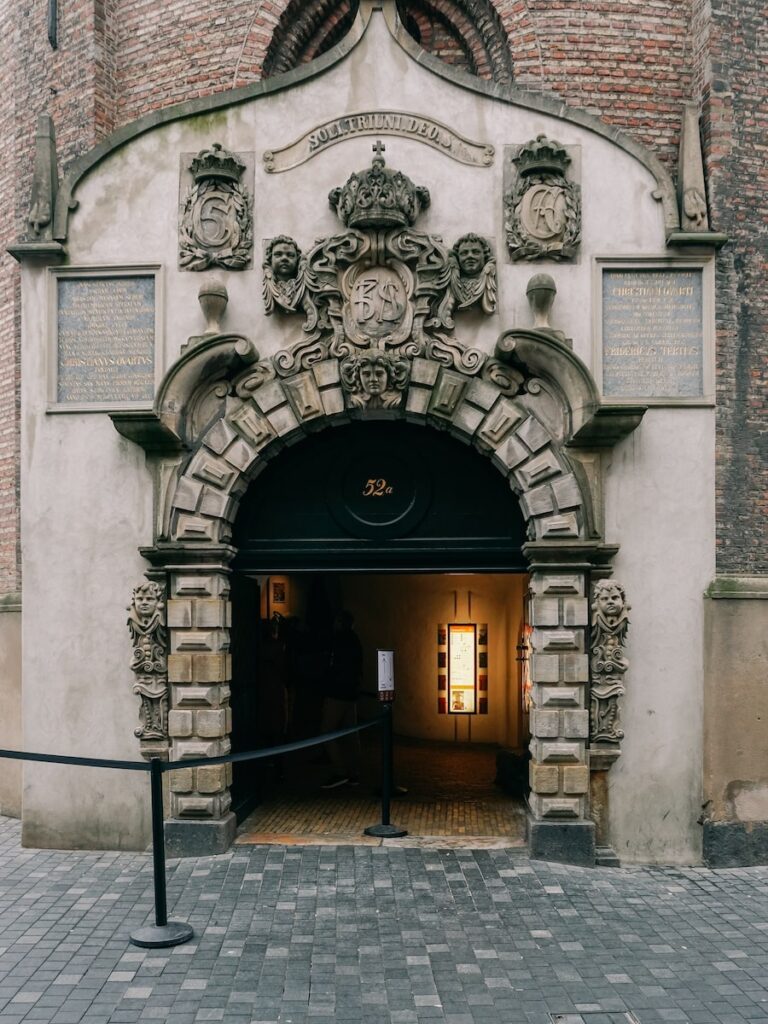
The spiral ramp is 210 meters long, and walking to the top is fairly easy. Practically, performing one complete turn means climbing 3,74 meters. But the numbers become more interesting depending on whether you climb along the outer or inner wall of the winding corridor.
It’s all a matter of grade. Climbing along the outer wall might feel easier because the grade is approximately 10%; however, there’s more walking distance, and you’ll need to climb 257 meters. On the other hand, if you choose the inner core, the grade makes walking much steeper: it’s 33%. The good thing here is that the distance is significantly shorter, just 85,5 meters!
Since climbing up requires more effort, there are clear signs -well, arrows- pointing out that you should use the outer wall for climbing up and the inner core for walking down. That’s why you will feel that walking up takes longer than going down.
The Library Hall feels huge
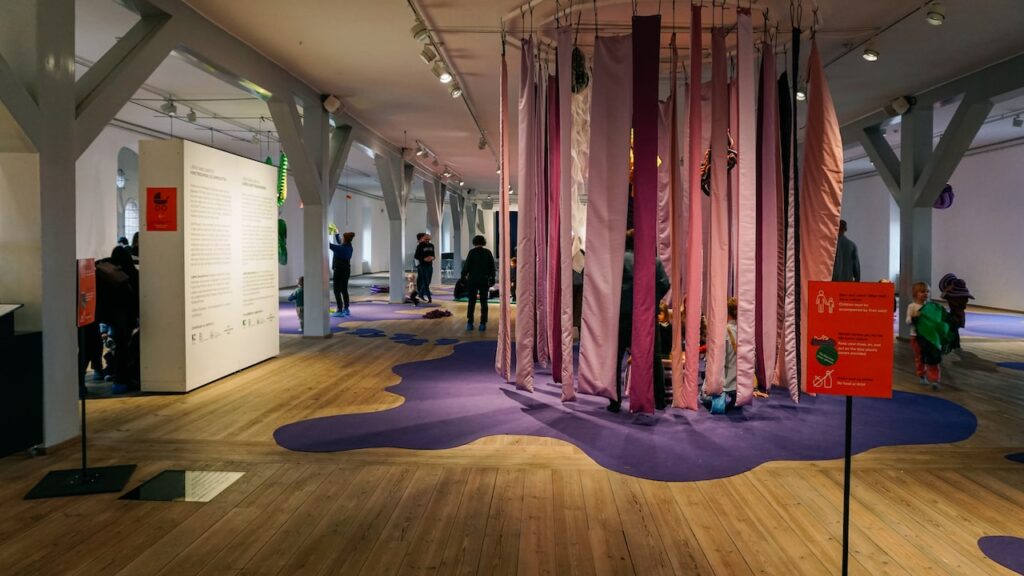
Although the Round Tower of Copenhagen feels tight, there’s an impressive space halfway to the top. The 800-square-meter room once hosted the University Library—and that’s where the horses used to bring books up and down. Since the late 1980s, its use has changed, and nowadays, it hosts an exhibition space, a small souvenir shop, and a cafe.
And here’s an interesting fact about the Round Tower and its Library Hall: in its walls, you could find more than 10,000 volumes, and apart from good manners, a prerequisite to visit was to avoid arguing or vomiting.
Step into the Bell Loft
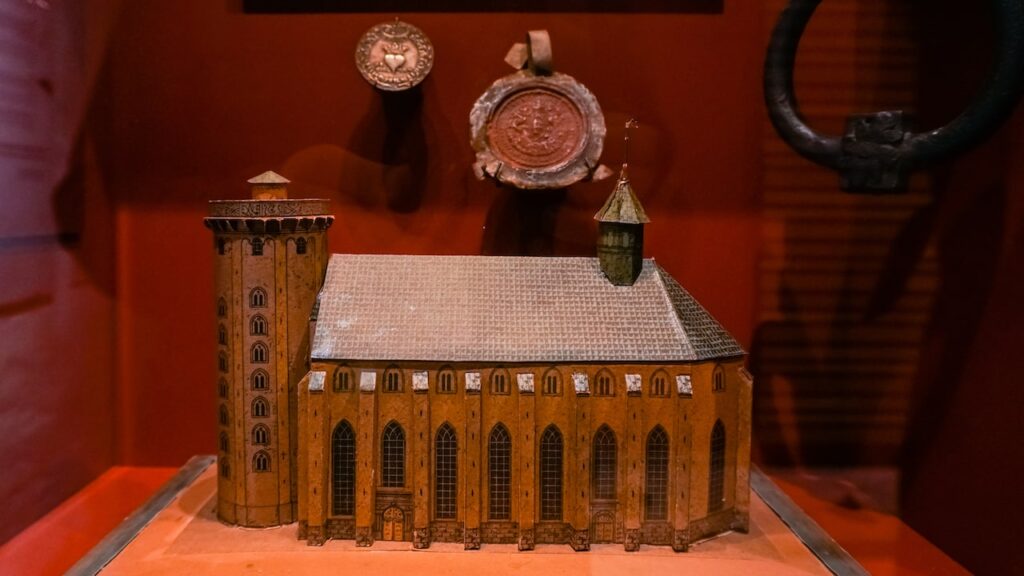
Located on a floor after the Library, you can see the Bell Loft. Only part of it is open to the public, but you can still glimpse where the bells used to ring for centuries.
Nowadays, you can see artifacts and get an idea of how the space looked in the past. I found the miniature of the tower impressive. Unfortunately, the biggest part of the room is closed to visitors, so you can just have a look at the space where the bell once stood.
Admire the Observatory
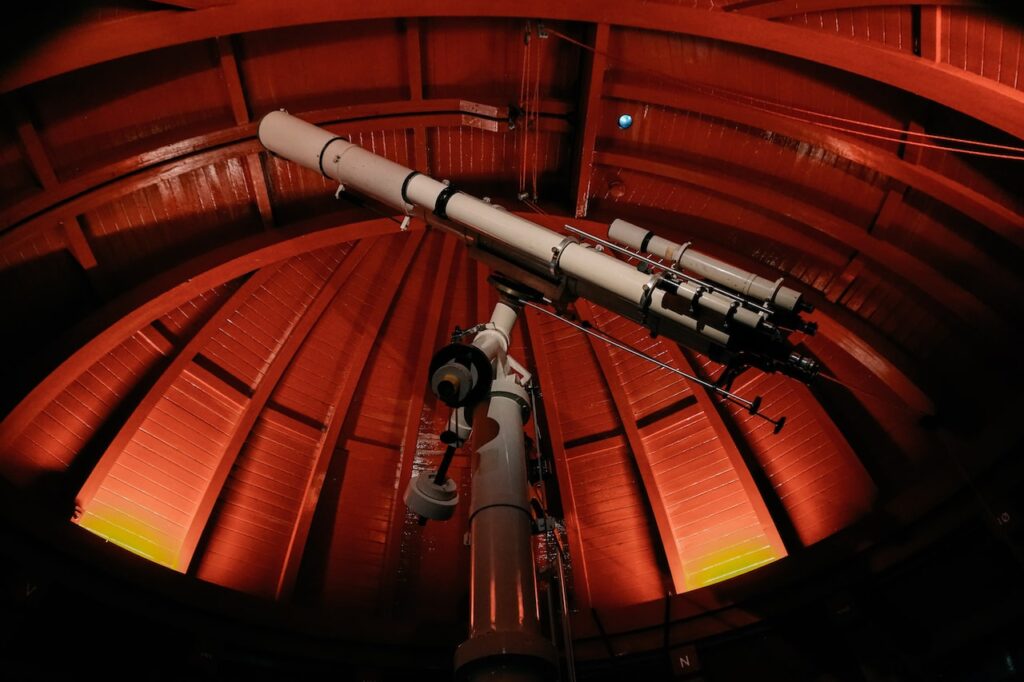
The Observatory is hands down the most beautiful room in the Round Tower of Copenhagen. It was—and still is—a place of wonder where astronomers could gaze at the stars and make observations and discoveries of celestial bodies. Although there was the idea of placing it away from the city center, King Christian IV insisted on having it there, in the middle of the city, thus making it easy for university students to reach.
Although Tycho Brahe never saw the Round Tower (he and King Christian didn’t like each other much), every notable personality visiting the city would stop at the Rundetårn. According to the legend, Peter the Great, the Russian Tsar, climbed the tower with his horse several times and discussed astronomy with the people working there.
The Observatory at the Round Tower is still open to the public, and you can access it.
Tip: See the Planetarium shortly before the Observatory. It depicts the planets’ current positions in real-time.
Traffic lights to and from the top

Finally, here’s a useful fact about your visit to the Round Tower of Copenhagen. Although it’s a spiral ramp to the top, there are few steps to reach the viewpoint. Don’t imagine something extreme: approximately 25 steps on a winding staircase. However, since the staircase is old and narrow, the authorities have implemented a system of traffic lights.
As you can imagine, the rooftop is popular among people wanting to enjoy the view. That said, wait in the queue for the traffic light to turn green to climb up or down the stairs. There’s enough time to do it, and the traffic lights stay on for 2 minutes. You won’t need more than 10-15 seconds, though, but since there are lots of visitors, this timeframe allows a good traffic flow.
The rooftop views from the Round Tower are magnificent
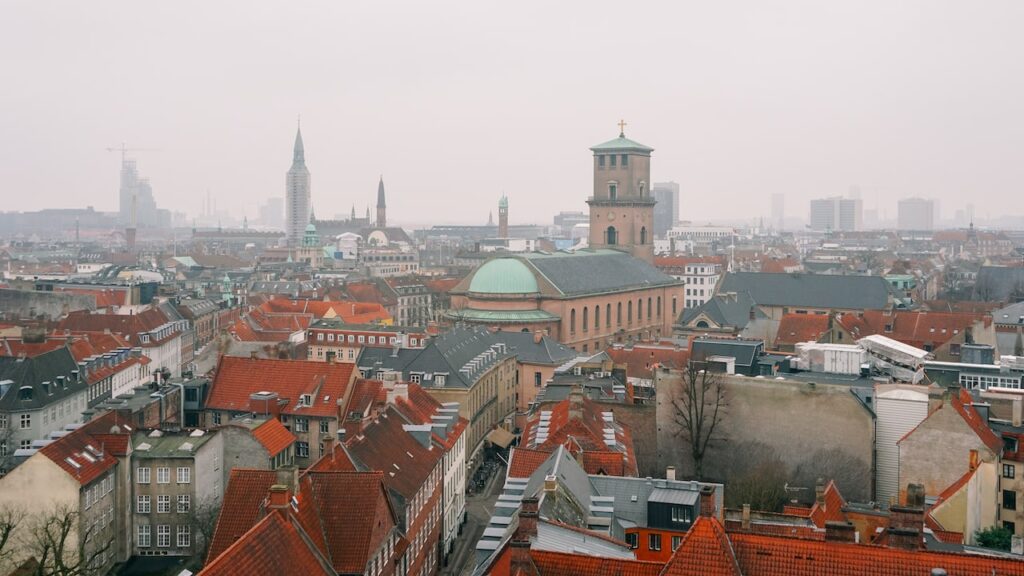
As I wrote earlier, I didn’t have luck with the weather during my visit to Copenhagen. It was cloudy and foggy on the days I was in the city, but this didn’t disappoint me. Unfortunately, the panoramic views from the tower were limited. Even if you don’t visit the city when the sun prevails, I encourage you to see Copenhagen from the iconic tower’s top.
There’s a 360-degree veranda offering panoramic views, and signs point to the landmarks on the horizon. On a clear day, you can even see Sweden, but if that’s not the case, it’s still great to admire the views over Copenhagen, one of the most beautiful European cities.
Round Tower Tip: A little kiosk sells ice creams and coffee during the summertime. Take a break and enjoy it!
Hans Christian Andersen featured it in his tales
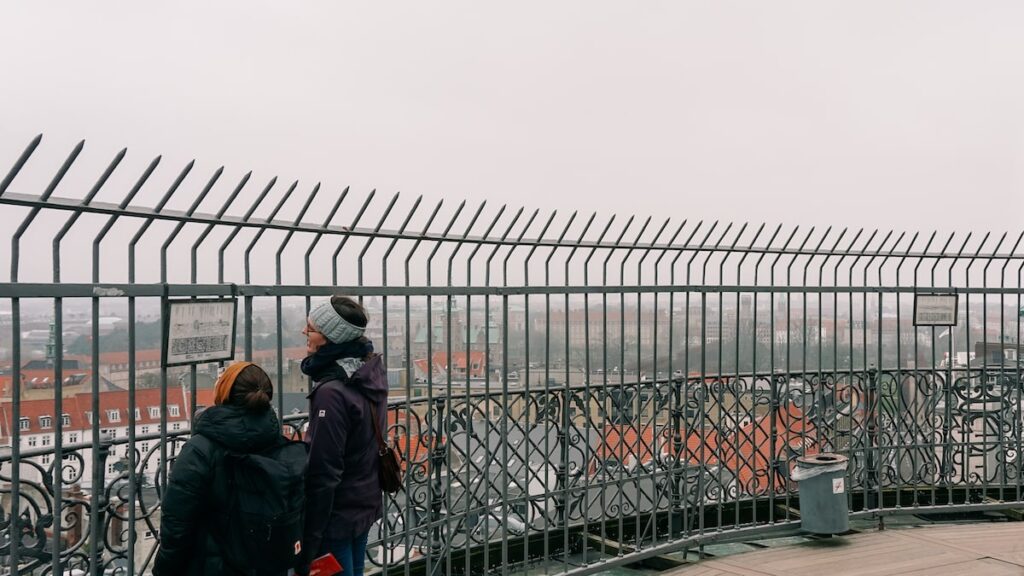
The last fact about the Round Tower in Copenhagen has, of course, to do with the great Danish storyteller Hans Christian Andersen. Throughout his work, the famous building has found its place, and its existence probably magnetized Andersen. For example, in The Tinderbox, a dog supposedly has eyes as big as the tower. In the novel “To Be, or Not To Be,” the character Niels Bryde grows up at the tower because his father is a gatekeeper.
There are plenty of references, and the fact that the tower is featured in Andersen’s stories also shows its significance throughout the centuries.
The Round Tower in Copenhagen: Info for your visit
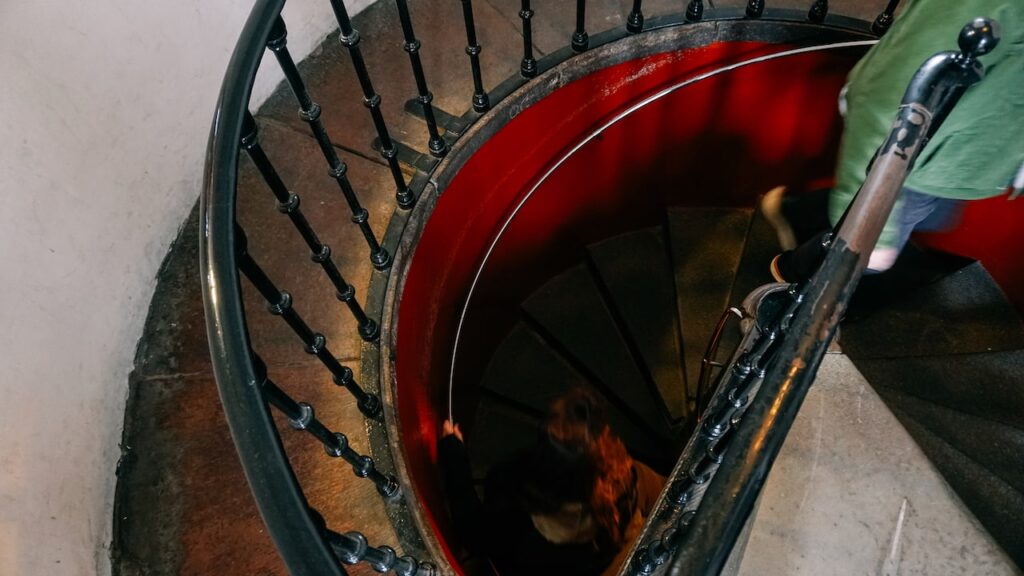
In the final section of this article about the Copenhagen Round Tower, you’ll find practical info for your visit.
Opening hours
From April to September, the Round Tower is open daily from 10 am to 8 pm.
From October to March, it is open daily from 10 am to 6 pm; however, on Tuesdays and Wednesdays, it stays open until 9 pm.
Visiting the tower during winter might not give you the best city views due to the weather, but there’s a plus: the Observatory is open and manned between October and March every Tuesday and Wednesday between 6 pm and 9 pm.
Entry fees
If you purchase the Copenhagen Welcome Card, access to the Round Tower is free. This is a great option if you plan to do extensive sightseeing, such as canal cruises, hop-on-hop-off buses, museums, etc.
If you only plan to see the Round Tower, then there’s no need for the card. The ticket costs 40 Danish Kronas. You can purchase your ticket online or queue at the tower.
The Round Tower of Copenhagen: Conclusion
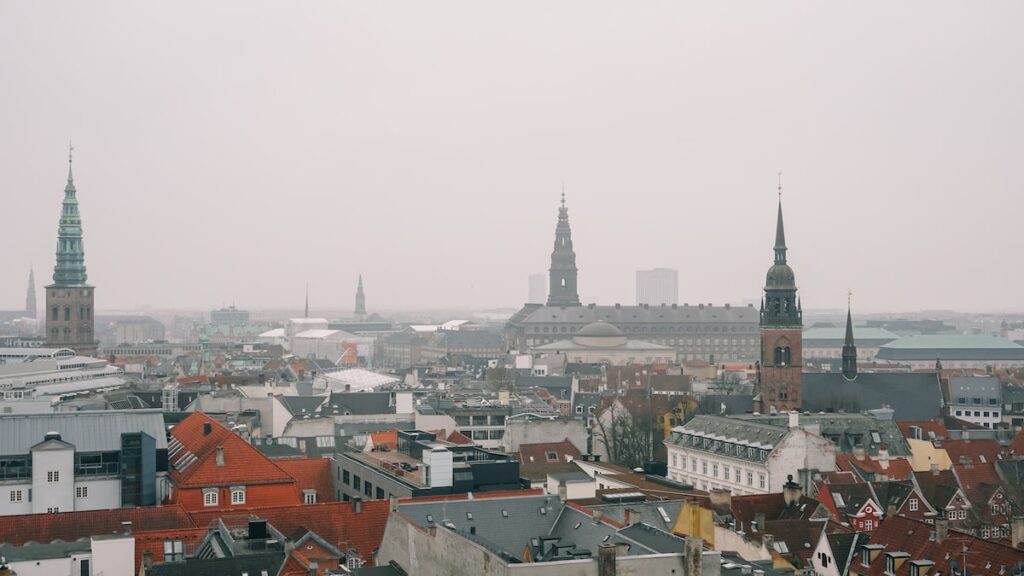
The Round Tower of Copenhagen is among the top things to see in the city. Apart from its impressive construction, the building has a century-long history and is a living proof of former time architecture. While the rooftop views over the city are impressive even during the winter, in my opinion, the most remarkable element is the spiral ramp. It makes it easy to walk to the top at your own pace and lets you enjoy walking inside a historical building.
Therefore, I highly recommend a visit to the Rundetårn. It’s not just the zero point of the city; it’s also a charming landmark that will help you navigate through the city’s past. Don’t miss it.
More about Copenhagen: Nyhavn guide
Pin it for later
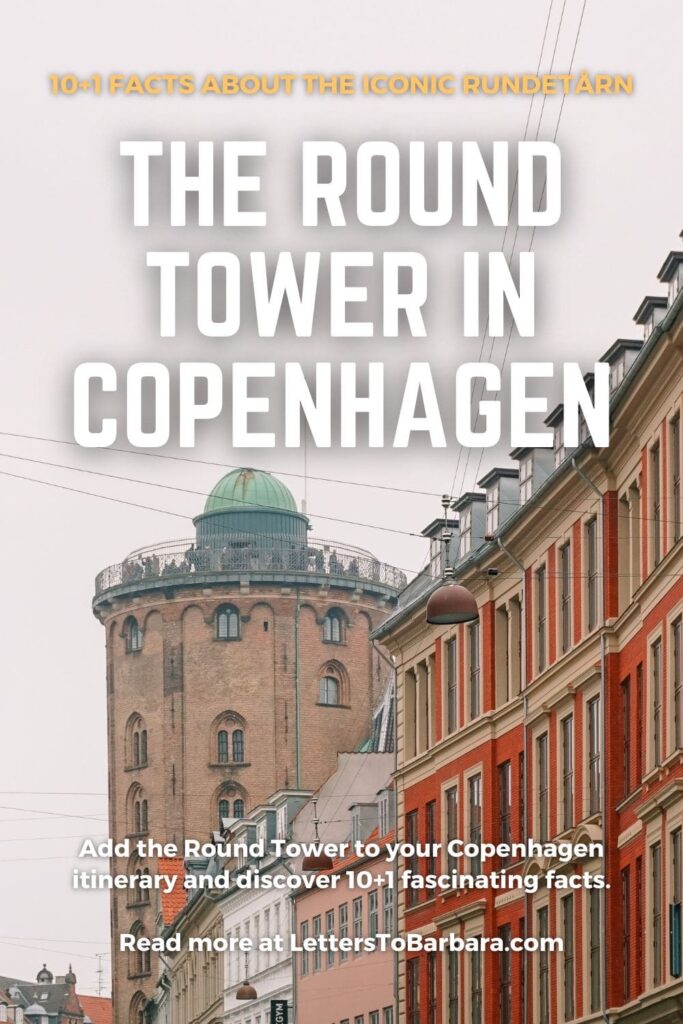
Sharing is caring. Share this article about the Round Tower in Copenhagen, Denmark, with your friends.
Last Updated on April 13, 2024 by George Pavlopoulos
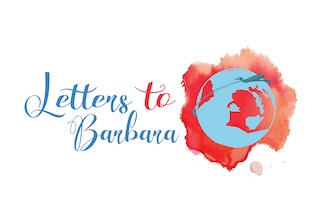
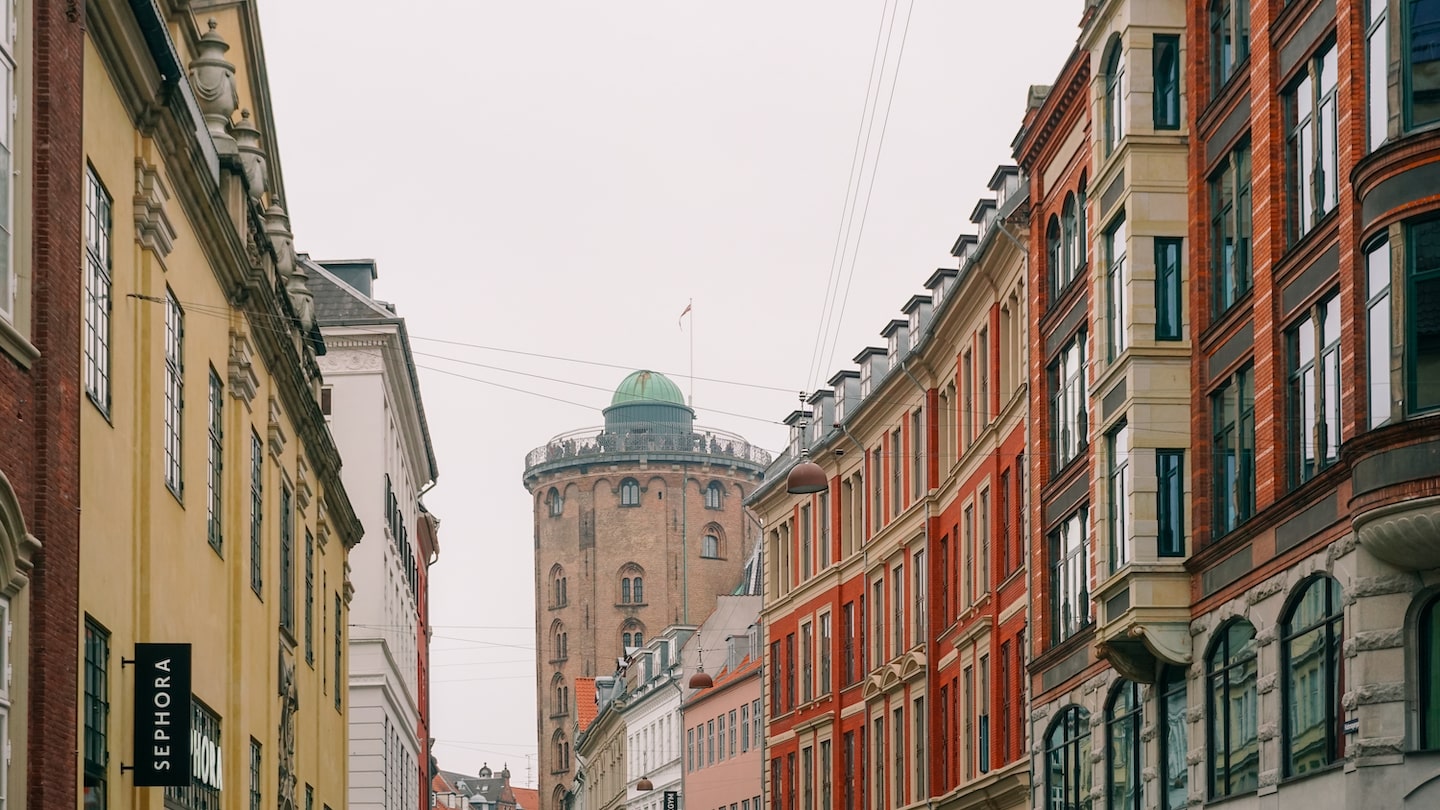

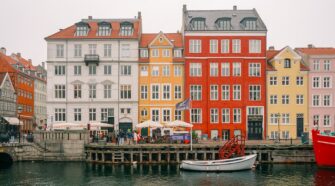
No Comment